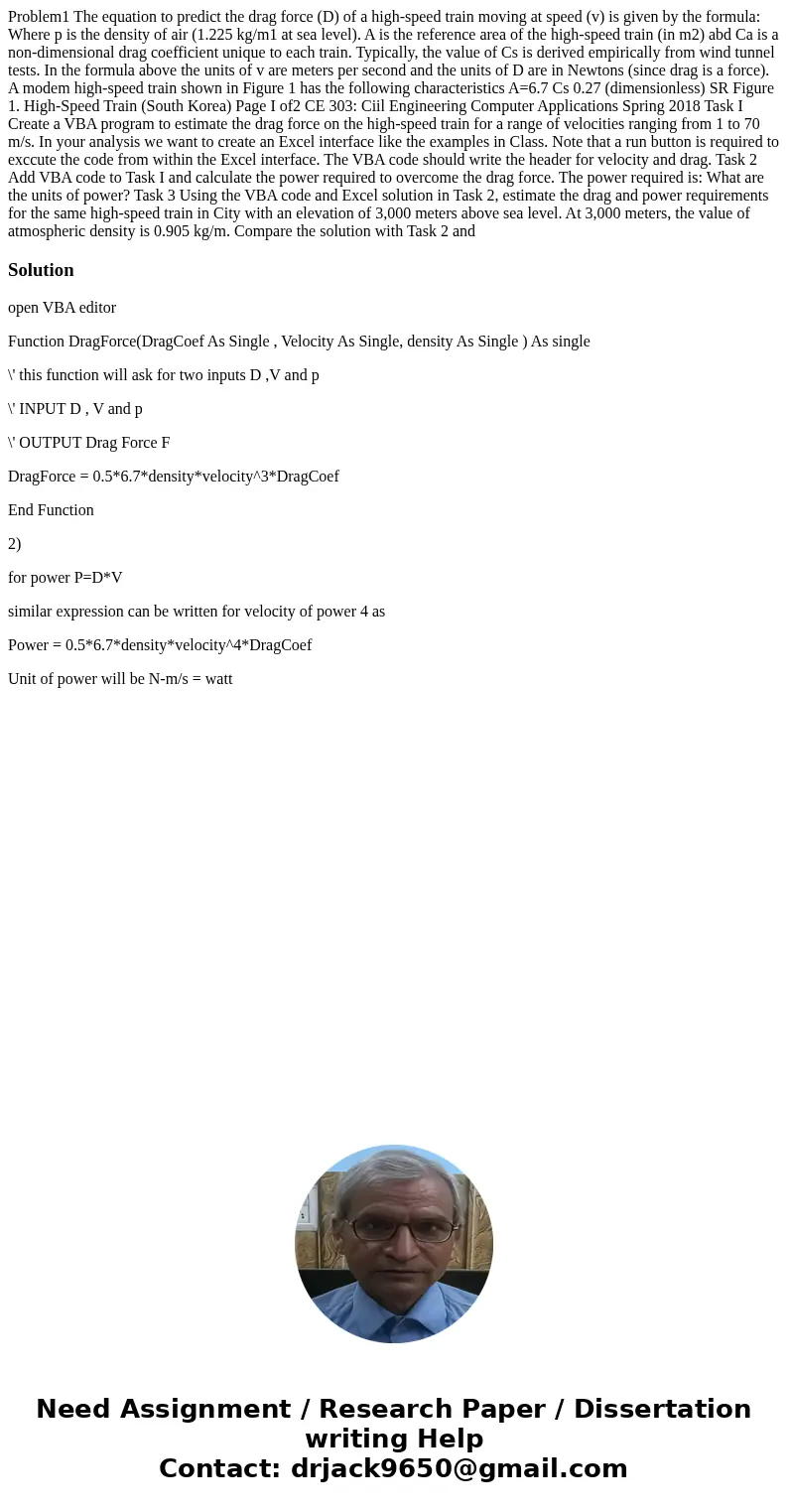Problem1 The equation to predict the drag force D of a highs
Problem1 The equation to predict the drag force (D) of a high-speed train moving at speed (v) is given by the formula: Where p is the density of air (1.225 kg/m1 at sea level). A is the reference area of the high-speed train (in m2) abd Ca is a non-dimensional drag coefficient unique to each train. Typically, the value of Cs is derived empirically from wind tunnel tests. In the formula above the units of v are meters per second and the units of D are in Newtons (since drag is a force). A modem high-speed train shown in Figure 1 has the following characteristics A=6.7 Cs 0.27 (dimensionless) SR Figure 1. High-Speed Train (South Korea) Page I of2 CE 303: Ciil Engineering Computer Applications Spring 2018 Task I Create a VBA program to estimate the drag force on the high-speed train for a range of velocities ranging from 1 to 70 m/s. In your analysis we want to create an Excel interface like the examples in Class. Note that a run button is required to exccute the code from within the Excel interface. The VBA code should write the header for velocity and drag. Task 2 Add VBA code to Task I and calculate the power required to overcome the drag force. The power required is: What are the units of power? Task 3 Using the VBA code and Excel solution in Task 2, estimate the drag and power requirements for the same high-speed train in City with an elevation of 3,000 meters above sea level. At 3,000 meters, the value of atmospheric density is 0.905 kg/m. Compare the solution with Task 2 and 
Solution
open VBA editor
Function DragForce(DragCoef As Single , Velocity As Single, density As Single ) As single
\' this function will ask for two inputs D ,V and p
\' INPUT D , V and p
\' OUTPUT Drag Force F
DragForce = 0.5*6.7*density*velocity^3*DragCoef
End Function
2)
for power P=D*V
similar expression can be written for velocity of power 4 as
Power = 0.5*6.7*density*velocity^4*DragCoef
Unit of power will be N-m/s = watt

 Homework Sourse
Homework Sourse